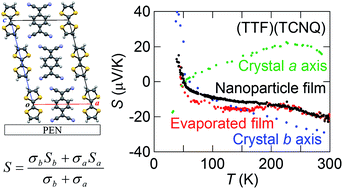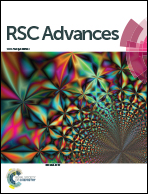Thermoelectric power of oriented thin-film organic conductors
Abstract
The temperature dependence of thermoelectric power is investigated down to low temperatures for oriented thin films of organic conductors. In addition to the evaporated films, highly oriented films consisting of nanoparticles are fabricated by the solution method for tetrathiafulvalene:tetracyanoquinodimethane (TTF)(TCNQ) and (TTF)[Ni(dmit)2]2 (dmit: 1,3-dithiole-2-thione-4,5-dithiolato). The resulting films show n-type thermoelectric power, whose temperature dependence is similar to the single-crystal result along the most conducting axis. Owing to the ordered orientation and nanostructures, the thermoelectric power factor is considerably improved in comparison with the ordinary organic films.


 Please wait while we load your content...
Please wait while we load your content...